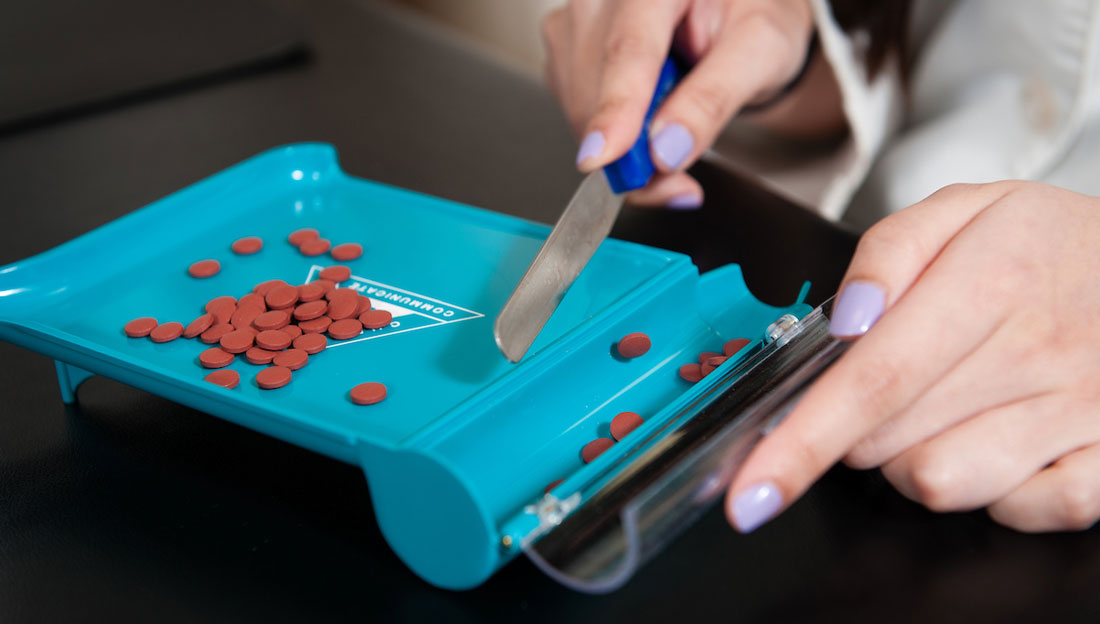You Asked: What does Adderall do to your body?

Adderall is a useful therapeutic for people with attention-deficit/hyperactivity disorder (ADHD) or narcolepsy, but it is also used illegally, without a prescription as a “study drug” by students—and, increasingly, young professionals—looking for an edge that will help them stay awake longer and get more done. However, it is far from a benign drug, and its influences on the brain and the rest of the body can be profound.
“This is a serious drug that has serious consequences,” said Eric Grayson, PharmD, a clinical assistant professor at the Texas A&M Health Science Center Irma Lerma Rangel College of Pharmacy. “We have to ask ourselves, ‘Are the benefits we’re getting from the medication worth the risk of side effects?’” In the case of Adderall, the risks can be extreme: they include stroke and sudden death. People taking the drug without a doctor’s supervision, of course, haven’t had the risk versus benefit discussion with their physician, and they haven’t been evaluated for pre-existing conditions like high blood pressure or glaucoma that could make the drug even more dangerous.
People with narcolepsy have brains without adequate levels of certain neurotransmitters responsible for stabilizing wakefulness; drugs like Adderall stimulate the brain enough that the patients can get through the day without falling asleep. In people with ADHD, the drug, used in conjunction with appropriate behavioral and psychotherapeutic interventions, brings their level of stimulation down to a level where they’re better able to function. In healthy people, the drug has the opposite effect: it over-stimulates the brain.
Adderall is a combination of two central nervous system (CNS) stimulants, amphetamine and dextroamphetamine. When these get to the brain, they act like the naturally occurring neurotransmitters dopamine, epinephrine (also known as adrenaline) and norepinephrine. Therefore, to understand the effects of Adderall, we need to look at what these chemicals do in the brain normally.
Dopamine is the “reward” neurochemical, which explains why Adderall can produce feelings of euphoria. It may also help the brain from being distracted by other little things, whether a game of solitaire or the ping of an incoming e-mail, that would normally provide a small “hit” of a reward.
At the same time, epinephrine is ramping up the sympathetic nervous system, putting the body in fight-or-flight mode. This triggers alertness, clarity, and focus, and it also decreases appetite.
Unlike pure adrenaline, however, Adderall keeps norepinephrine around in the synapses longer, which enhances and sustains the flight-or-flight response. Norepinephrine also helps increase focus.
These effects come at a cost, however. “Side effects tell the tale of what is happening in the brain and the body,” Grayson said, and Adderall side effects include dizziness, headache, insomnia, psychosis and depression. It also lowers the convulsion threshold, meaning Adderall creates so much activity in the brain that if a person is prone to seizures, the drug makes these much more likely.
Even at normal therapeutic doses, Adderall can exaggerate existing psychiatric conditions such as anxiety, bipolar disorder, depression or schizophrenia. These results can be unpredictable. “Everybody’s psychiatric baseline is a little different,” Grayson said. “It really depends on the starting point where the patient is. It’s an enhanced state of normal human emotions: anger, sadness, fear.”
Adderall is responsible for effects outside the brain as well, and these can happen to anyone, even those taking the drug as prescribed for an approved medical reason. “These drugs affect individual organ systems independently,” Grayson said, “so appropriate doses for the brain may still cause side effects in the heart, for example.”
These side effects include increased blood pressure, palpitations, and even sudden cardiac death. “If your heart is already running at maximum capacity,” Grayson said, “it can’t adequately ramp up to meet the increased demands of exercise or stress, but it will try,” so over time, the drug can also cause cardiomyopathy, or an enlargement of the heart that makes it more difficult to pump blood properly and can eventually lead to heart failure.
“Patients receiving this medication need to be under the supervision and care of a health care professional,” Grayson said. The physician can not only stop the Adderall if side effects develop but also treat the underlying condition exacerbated by the drug. Especially as people get older and have greater risk of glaucoma or heart or blood pressure problems, the risk-benefit ratio needs to be re-evaluated.
Taking the drug as prescribed can also mitigate addiction risk, which is a very real concern with Adderall. “I don’t worry about the drug too much in patients who are being closely monitored by their physician,” Grayson said, “because lowest possible dose is given, not the dose that causes euphoria.” The euphoric feeling is only reached at higher and higher doses, causing the person who is abusing the drug to continually take more and more of it to achieve the same high. “There’s a positive psychological reinforcement for something the body becomes very accustomed to,” Grayson said, “so you get the physical and psychological addiction, and the pleasure center in the brain is stimulated. You put all that together, and you get a very abusive picture.”
Media contact: media@tamu.edu


